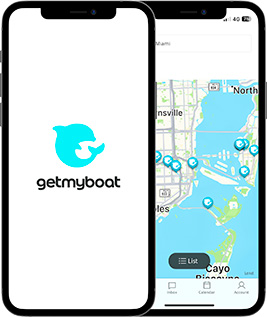Lake Hamilton is a large reservoir in Arkansas that’s popular for boating, fishing and other water-recreation activities. Commercial boating enterprises contribute significantly to the local economy and provide visitors with many ways to enjoy the lake. That said, it’s vital for operators to understand the regulatory framework — oversight is shared among Entergy Arkansas (owner/operator of the lake project lands), the Arkansas Game & Fish Commission (AGFC) and, in applicable cases, the U.S. Coast Guard or its Auxiliary.
Every Getmyboat operator must adhere to and take responsibility for operating in accordance with local guidelines. This involves acquiring appropriate registrations, passes, permits, and meeting all vessel and captain requirements. It also entails utilizing designated docks and approved boating areas for commercial activities, while complying with any additional stipulations outlined by local laws and facility regulations.
To help Getmyboat operators comply with all applicable regulations, we have gathered the following essential details for boating on Lake Hamilton:
Commercial Boat Permit (Entergy Arkansas)
Any commercial boat operator or business seeking to use Lake Hamilton commercially must hold the appropriate permit from Entergy Arkansas. While much of the publicly-available material focuses on shoreline facilities (docks, ramps, piers), it is important to check with Entergy’s Hydro/Project 271 office for the specific “commercial activities” permit requirements on the lake. For example, Entergy states that “all project lands or water require a permit from Entergy Arkansas prior to installation or placement.”
For questions, contact Entergy at 501-844-2148 or via email LakePermits@Entergy.com.
Note: Please verify directly with Entergy whether your specific boat use counts as a “commercial use” requiring separate authorization.
Certificate of Inspection (USCG)
If the vessel is used to carry passengers for compensation (a charter or tour business), the U.S. Coast Guard may require a Certificate of Inspection (COI). The COI must be maintained and displayed on-board. Periodic inspections may apply to ensure compliance with USCG safety and structural standards.
While specific COI requirements for Lake Hamilton may depend on vessel size and use, operators should consult the USCG or a qualified marine surveyor/licensing service.
U.S. Coast Guard Captain’s License
Commercial vessel operation (defined as carrying passengers for hire) requires a valid USCG captain’s license appropriate to the vessel size, passenger capacity and area of operation. Operators must also comply with all relevant navigation, passenger safety and operational rules, including speed limits, safe distances from other craft, night-operation restrictions, etc.
Boat Charter Insurance in Arkansas
Under Arkansas law, and as part of the registration and commercial-use process, commercial vessels on public waterways such as Lake Hamilton must maintain adequate commercial liability insurance. The AGFC website notes that insurance is required for certain vessels (for example: powered by > 50 hp or personal watercraft).
Be sure your policy covers passenger operations if you are offering charters.
Registration & Boater Education
Registration: Any watercraft with machinery (engine) must be registered in Arkansas. The AGFC provides that “any vessel… if it is powered by machinery must be registered.”
Boater Education: Anyone born on or after January 1, 1986 who intends to operate a motorboat or sailboat must successfully complete an approved boater education course and carry the resulting card. Additionally, minimum age rules apply for operation of motorboats and personal watercraft: for example, PWC operators must be at least 16, or if 12-15 then under supervision.
Operational & Safety Guidelines for Lake Hamilton
In addition to licensing, registration and insurance, operators should follow these good-practice and regulatory guidelines for Lake Hamilton:
- Adhere to posted speed limits and no-wake zones. For example, avoid high-speed operation near docks or swim areas.
- Avoid navigating in areas crowded with recreational boaters or swimmers; maintain safe distances.
- Discharging pollutants (oil, fuel, sewage) into the lake is prohibited and subject to enforcement.
- Ensure the vessel has required safety gear on board (life jackets for all, appropriate fire extinguishers, first-aid kit, navigation lights if operating at night, etc.).
- Commercial boats should not dock at residential docks unless permitted.
- Some portions of the lake may be designated off-limits (fish-spawning zones, wetlands) or subject to seasonal restrictions; coordinate with Entergy/AGFC for any special zones.
- Follow all reporting requirements: e.g., if there is an accident or injury, immediate notification to the appropriate authority (Entergy or local agency) may be required.
- Confirm operating hours: some operations may be restricted at night or during certain draw-down or low-water periods.
Pick-Up / Drop-Off Location
Typical public access point: Lake Hamilton Public Boat Ramp
Address: Hot Springs National Park, AR 71913















